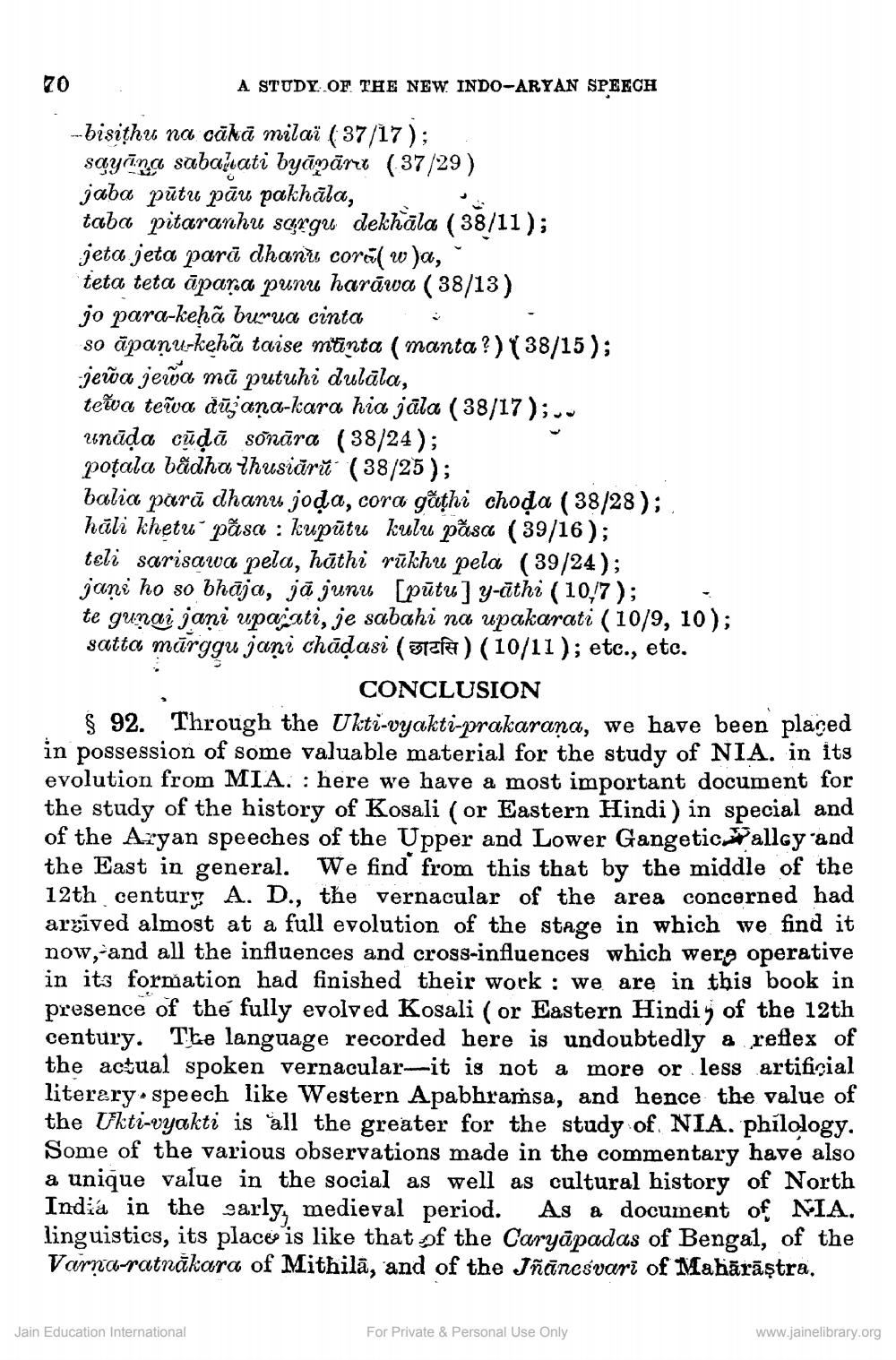________________
70
A STUDY OF THE NEW. INDO-ARYAN SPEECH
-bisithu na cākā milaï (37/17); sayang sabamati byāpārt (37/29) jaba pūtu pāu pakhāla, taba pitaranhu sargu dekhāla (38/11); jeta jeta parā dhanu coral wja, teta teta āpara punu harāwa ( 38/13) jo para-kehã burua cinta so ăpaņu-kehā taise münta (manta ?)38/15); jewa jewa mā putuhi dulāla, teiva teño đūjana-kara hia jāla (38/17);unāļa cūļā sonāra (38/24); potala bādha husiara ( 38/25 ); balia pärā dhanu joda, cora găthi choda ( 38/28); hāli khetu' păsa : kupūtu kulu păsa ( 39/16); teli sarisawa pela, häthi rūkhu pela (39/24); jani ho so bhāja, jā junu [pūtu ] y-āthi (10,7); te gunai jaņi upajati, je sabahi na upakarati (10/9, 10); satta mārggu jani chāṇasi (STERT) (10/11); etc., etc.
CONCLUSION § 92. Through the Ukti-vyakti-prakarana, we have been placed in possession of some valuable material for the study of NIA. in its evolution from MIA. : here we have a most important document for the study of the history of Kosali (or Eastern Hindi) in special and of the Azyan speeches of the Upper and Lower Gangetic alloy and the East in general. We find from this that by the middle of the 12th century A. D., the vernacular of the area concerned had arrived almost at a full evolution of the stage in which we find it now, and all the influences and cross-influences which were operative in its formation had finished their work : we are in this book in presence of the fully evolved Kosali (or Eastern Hindi y of the 12th century. Tke language recorded here is undoubtedly a reflex of the actual spoken vernacular-it is not a more or less artif literary speech like Western Apabhramsa, and hence the value of the Ukti-vyakti is all the greater for the study of. NIA. philology, Some of the various observations made in the commentary have also a unique value in the social as well as cultural history of North India in the early, medieval period. As a document of NIA. linguistics, its place is like that of the Caryāpadas of Bengal, of the Varna-ratnākara of Mithila, and of the Jñānesvari of Mahārāştra.
Jain Education International
For Private & Personal Use Only
www.jainelibrary.org




